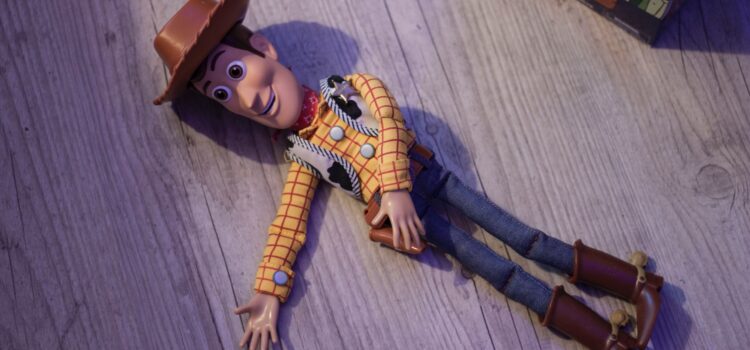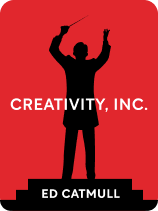

This article is an excerpt from the Shortform book guide to "Creativity, Inc." by Ed Catmull. Shortform has the world's best summaries and analyses of books you should be reading.
Like this article? Sign up for a free trial here .
What does the “Story is King” motto mean? Why did Pixar adapt and then abandon this motto?
Pixar used to believe that the principle of “Story is King” would help bring success. Unfortunately, a good idea isn’t enough if you don’t have a great team to execute it in the right way. Pixar learned that the hard way when Toy Story 2 production didn’t go as planned.
Read more about the “Story is King” principle and what Pixar’s revised principles are.
Pixar’s Principles: Story Is King and Trust the Process
As Pixar started its journey, Catmull had to determine what the company’s guiding principles would be. Following the success of Toy Story, Catmull and his team adopted two principles they believed would lead to success: “Story is King” and “Trust the Process.”
But while these mottos were inspirational, Catmull soon discovered they fell apart when put to the test. This realization came following a near-disaster with one of Pixar’s films: Toy Story 2.
The Toy Story 2 Fiasco
Disney originally wanted Toy Story 2 to be a direct-to-video sequel. At the time, this typically meant the film would be given less attention, time, and money, leading to a lower-quality product. Catmull didn’t feel comfortable creating a mediocre film, so he asked Disney to make it a full theatrical release. To his surprise, they agreed.
While Catmull was thrilled to approach Toy Story 2 as a full-fledged theatrical release, he now faced a predicament. Pixar was still working on A Bug’s Life, and, suddenly, their workload had doubled overnight. Also, most of the team who had worked on the original Toy Story were involved with the A Bug’s Life production process and couldn’t also work on Toy Story 2.
However, confident in the principles and past success of his organization, Catmull was sure that he’d be able to put together a team to work on Toy Story 2. The concept had been developed by Lasseter, and the characters and world were already established by the first film. Catmull brought on two skilled animators (and first-time directors) to lead the project. Given the fact that they had a solid concept for the film, Catmull thought Toy Story 2 would be an easy win for the studio if the team just remembered that “story is king” and to “trust the process.”
He was wrong. The directors weren’t equipped for the job and expressed no confidence in their work. They continually asked for more time with Lasseter to work through problems, but he was too busy with A Bug’s Life to give them much attention. Catmull thought if he just “trusted the possess,” any issues would eventually work themselves out.
After A Bug’s Life premiered in 1998, Lasseter finally had the time to look at the team’s work. At this point, the Toy Story 2 team had been working for about a year, and Lasseter expected the film to be in a decent place. However, after watching their reels, Lasseter told Catmull they had a problem. The process wasn’t working, and Pixar was facing potential disaster.
Changing Course
While Disney was fine with the state of the Toy Story 2 because it was “only a sequel,” Catmull wasn’t willing to sacrifice the reputation of Pixar with a low-quality film. He released the directors of Toy Story 2 from the project and put Lasseter in charge. He felt guilty for putting the new directors into a situation they weren’t prepared for, but he knew that letting them go was the only way to get the film back on track.
He brought back a lot of the team from the original Toy Story to work on fixing this project. This group was known as the Braintrust (a term which Pixar would later adopt for film review meetings), and they were known for their ability to share feedback and critique one another without defensiveness or ego getting in the way. With only nine months to complete the film (a fraction of the time most films of this nature need to be successfully produced), the team scrapped most of the existing film and started from scratch.
Over the next nine months, the team worked frantically to develop the project. The employees of Pixar were exhausted and overworked, but they were dedicated to making the project work. Fortunately for Pixar, their hard work paid off. Toy Story 2 was met with critical and commercial acclaim and made over $500 million at the box office. The film did so well, in fact, that many claimed it was even better than the first film. While Catmull was proud of the success of the film, he recognized that the way it was developed wasn’t sustainable.
Pixar’s New Guiding Principles Away From “Story Is King”
After Toy Story 2, Catmull realized that Pixar’s original mottos were comforting but ineffective:
- “Story is King.” While it’s a powerful phrase, it’s ultimately hollow. Everyone knows that an engaging story is the key to an effective film, but it doesn’t provide any guidance to help find that story.
- “Trust the Process.” While it’s comforting to rely on a process when things get rough, “trusting the process” can quickly become “rely on the process to fix all problems instead of addressing them.” Catmull knew that things were going south on Toy Story 2 early on, but he didn’t do anything about it because he was “trusting the process.”
Instead of these concepts, Catmull developed a new focus for the company: Find and support the right people to create amazing films. To Catmull, quality wasn’t just a goal of the company. It was the core of the company. Though Toy Story 2 was a rough process, it cemented this ideal in Pixar’s DNA. They could have easily created a quick direct-to-video sequel as Disney had proposed, but they refused to settle.
Catmull’s core error with Toy Story 2 was that he relied on the wrong things to ensure quality. Moving forward, Catmull shifted the way he ran Pixar and used the following principles to guide the direction of the company:
- When a mediocre team works on a great idea, the project will fail. However, when a great team works on a mediocre idea, they will either fix the idea or come up with a better one. For example, the directors of Toy Story 2 were both expert animators but mediocre directors. Though they were given an excellent concept, they failed to deliver because they lacked the proper skills to elevate the product.
- A singular idea isn’t enough to create a great product. It requires a multitude of great ideas from a team of competent people. For example, the iPhone was not the result of one idea. It was, instead, the result of multiple ideas surrounding hardware, software, user interface, and other features.
- Quality requires healthy employees. Following Toy Story 2, many of Pixar’s employees were exhausted, injured, or sick. While Catmull admired the passion of his employees, he knew that overworked employees couldn’t produce quality work and were more likely to leave. He began to push for team members to have a life outside of work and ensured that employees were taken care of physically and mentally.
- Excellence has to be constantly earned. Catmull made the mistake of assuming that his company’s process was excellent because of the success of Toy Story. However, Toy Story succeeded because of the people working on the project, not a company-wide “process.” Catmull vowed to no longer rely on his company’s past success as an indicator of future success.

———End of Preview———
Like what you just read? Read the rest of the world's best book summary and analysis of Ed Catmull's "Creativity, Inc." at Shortform .
Here's what you'll find in our full Creativity, Inc. summary :
- How Pixar went from selling computers to successful animation studio
- What it takes to build a creative workplace culture
- Why George Lucas sold Pixar to Steve Jobs







where to prove Pixar abandoned their mottos? Please specify recources.